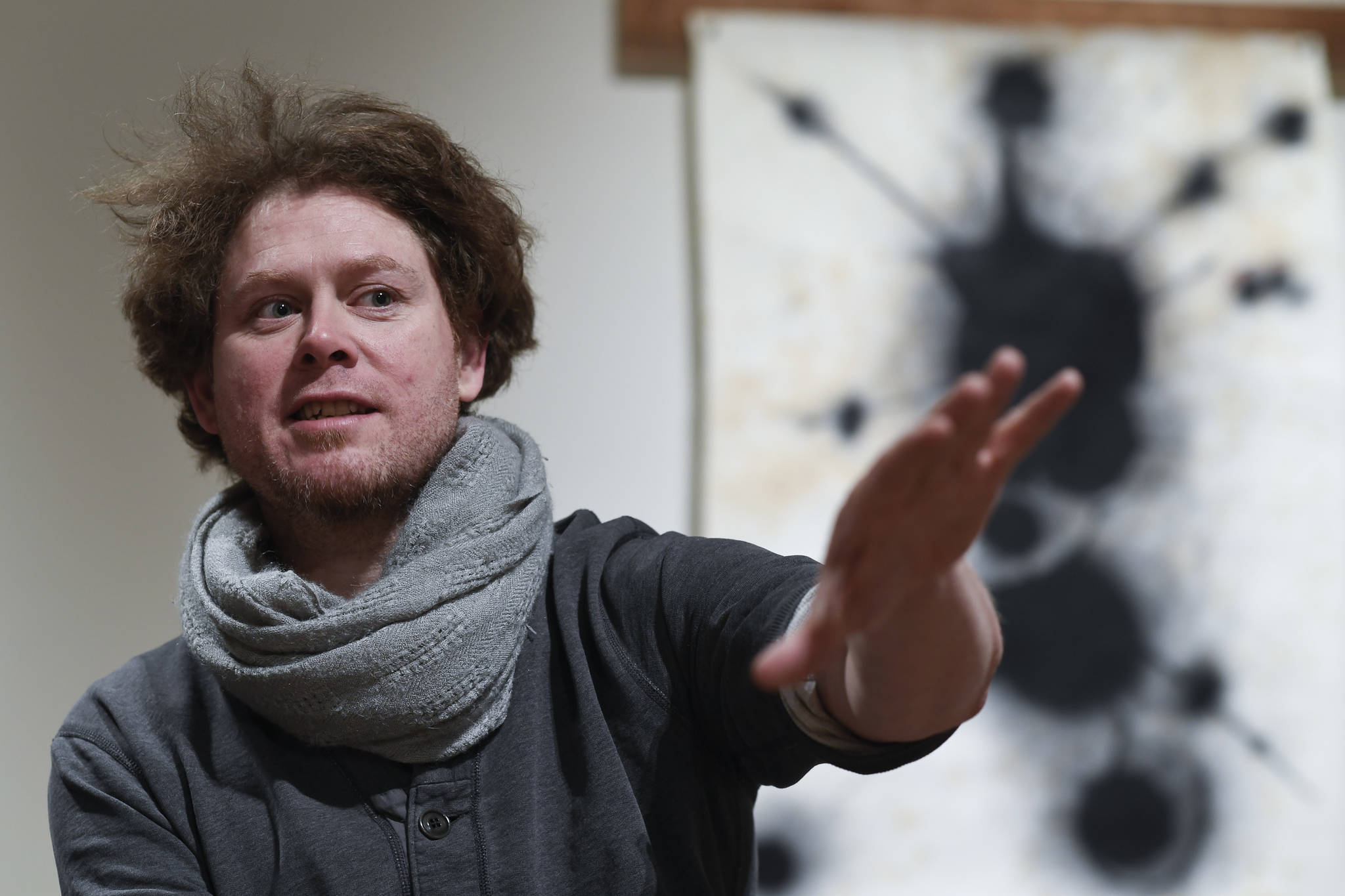In Donald Varnell’s world, traditional and contemporary aren’t opposites.
Varnell, a Ketchikan artist whose exhibition “The Crybabies”opened at the Alaska State Museum Friday, said the mixed-media work draws influences from a well of traditional Alaska Native art as well as the wilder waters of modern art.
“I don’t think you have one without the other,” Varnell said during an interview at the exhibition’s opening. “I don’t think to claim that you’re traditional is a virtue. I don’t think claiming that you’re a contemporary artist is a virtue either. I think there is a marriage.”
“I can’t say I’m a Robert Davidson or a David Boxley or a Nathan Jackson because those guys are just top notch,” he added.” I’m not at that level, but I’m convincing.”
[Find out the rhyme and reason behind this eclectic city museum collection]
Elements from both traditional Alaska Native art and modern art were readily apparent in the motor-mouthed artist’s 12-piece collection that will be up through April 6. The works include pieces with elements of carving, acrylic, spray paint and more.
One piece resembled a multi-faced, lysergic mutation of a Northwest Coast mask with many sets of eyes, noses and mouths battling for real estate on the same slab of wood. Another was a carving of a curvaceous female form covered in formline design with a fierce mouth between its legs were a heady blend of both styles.
Even a seemingly straightforward carved raven mask was slightly subverted.
The wooden piece was given a charred aesthetic via spray paint.
“After I did it (spray painted the piece) there’s the smell, and it’s like I can’t go back,” Varnell said. “I can’t go back and change this. I think it also reflected on the culture. You can’t go back and change it.”
Varnell said contemporary and traditional subject matter are equally valid.
“When I step away and I don’t want to do a profile of a raven or a profile of an eagle again and I wanna talk about a meth head, what I see, I think it’s important,” Varnell said. “We’re talking about people, and everybody’s legit.”
The more chaotic subject matter was particularly evident in a large two-dimensional work that blended formline motifs, blotches of color and facial elements that were reminiscent of a popular ’90s Nine Inch Nails T-shirt.
While the alt-rock staple wasn’t a specific influence, Varnell took the comparison as a compliment and extolled the virtues of the band’s mastermind Trent Reznor.
“He’s a genius,” Varnell said. “His work when I listen to it, I feel something. When I’m separated from my own work. I look at it, and I’m like holy sh_t, I kind of feel the same way. There’s something I feel the same way.
[Thunder Mountain students get a pleasant surprise]
Next to Varnell’s work was an exhibition of works that influenced the artist.
It was curated through collaboration between Varnell and museum curator of collections Steve Henrikson.
It includes works by Jim Schoppert, Alvin Amason, Lena Amason-Berns, Nathan Jackson and Jackson Polys, Delores Churchill, Selena Peratrovich and more.
In inspiration collection included multiple multi-generational connections.
Polys is Jackson’s son, Amason-Berns is Amason’s daughter, and Varnell is the grandson of Churchill and the great-grandson of Selina Peratrovich.
Varnell praised the enduring nature of the elder artist’s work and said he’d be pleased if many years down the line his work was held in similarly high regard but maybe in less reverent terms.
“If one day 200 years from now, someone says,’Donald Varnell, he was a badass,’ I’ll be happy,” Varnell said.

